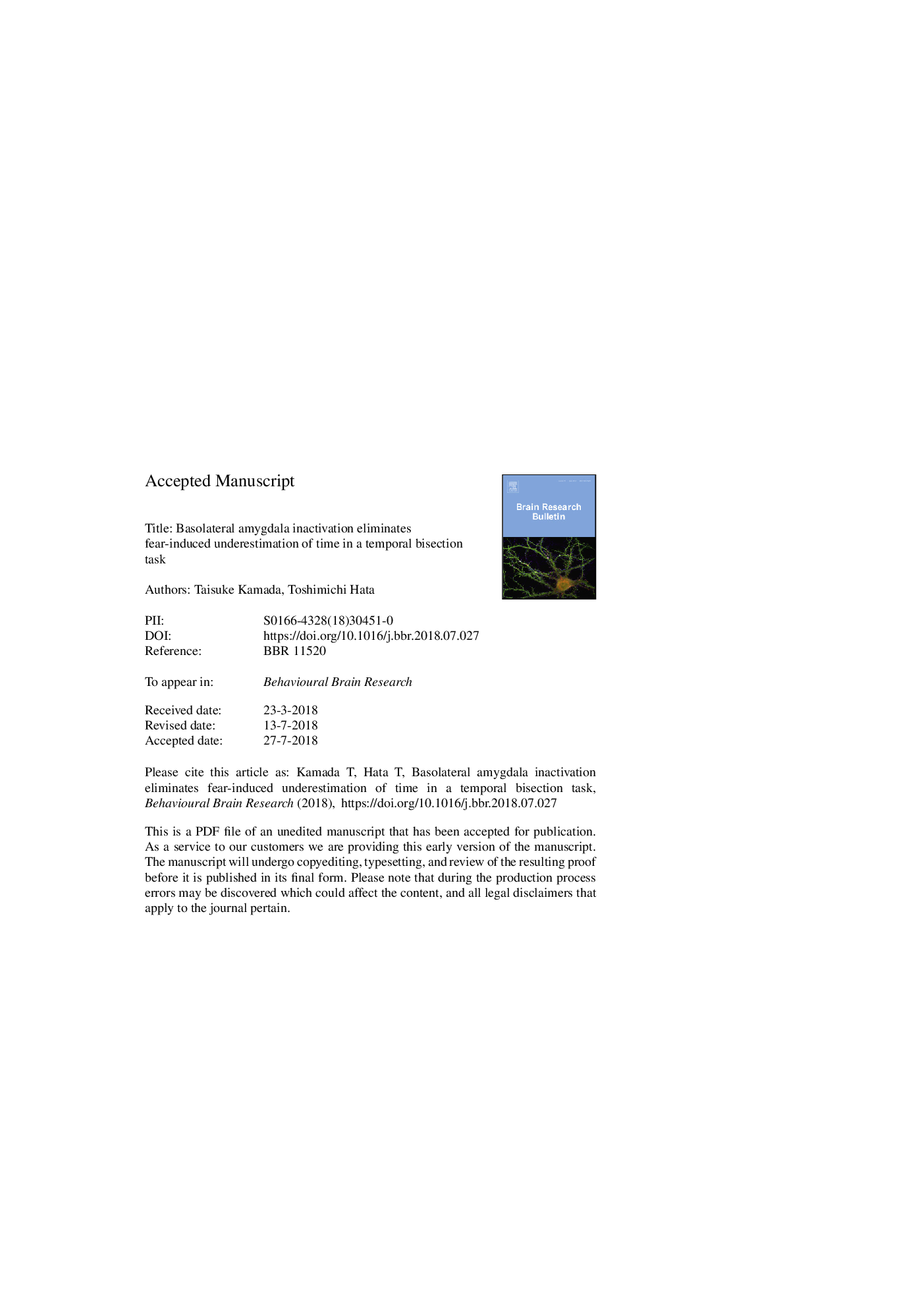| Article ID | Journal | Published Year | Pages | File Type |
|---|---|---|---|---|
| 10138286 | Behavioural Brain Research | 2019 | 32 Pages |
Abstract
We examined interval timing - time perception in the seconds-to-minutes range - of the fear-inducing stimulus and the role of the amygdala in this phenomenon. Rats were initially trained to perform a temporal bisection task, in which their responses to levers A and B were reinforced following 2-s and 8-s tones, respectively. After acquisition, the rats were also presented with tones of intermediate durations and pressed one of the two levers to indicate whether the tone duration was closer to 2 or 8âs. Subsequently, the rats underwent differential fear conditioning, in which one frequency tone (conditioned stimulus; CS+) was paired with an electric foot shock, whereas another frequency tone (CSâ) was presented alone. The rats were then infused with artificial cerebrospinal fluid (aCSF) or the GABAA agonist muscimol into the bilateral basolateral amygdala (BLA) before performing the bisection task with CS+ and CSâ. In rats infused with aCSF, the psychophysical function shifted rightward in CS+ relative to that in CSâ. Moreover, the point of subjective equality of the CS+ was higher than that of CSâ, suggesting that the duration of the fear âCS was perceived as shorter than that of the neutral CS. However, muscimol infusion into the BLA abolished this difference, suggesting that BLA inactivation suppresses the effect of the fear âCS. Our results demonstrate that normal BLA activity is essential for fear-induced underestimation of time.
Related Topics
Life Sciences
Neuroscience
Behavioral Neuroscience
Authors
Taisuke Kamada, Toshimichi Hata,
